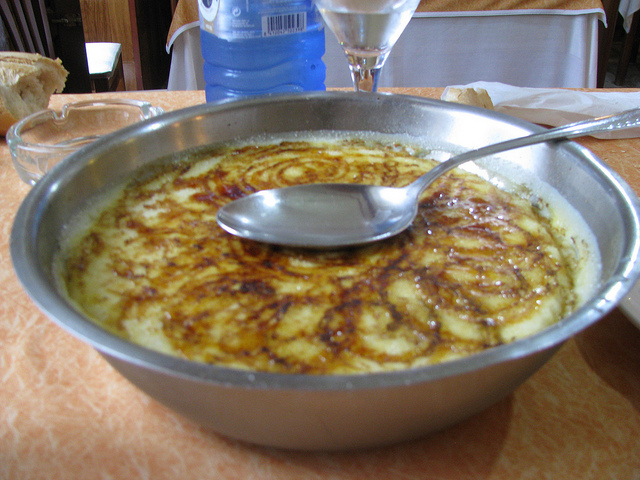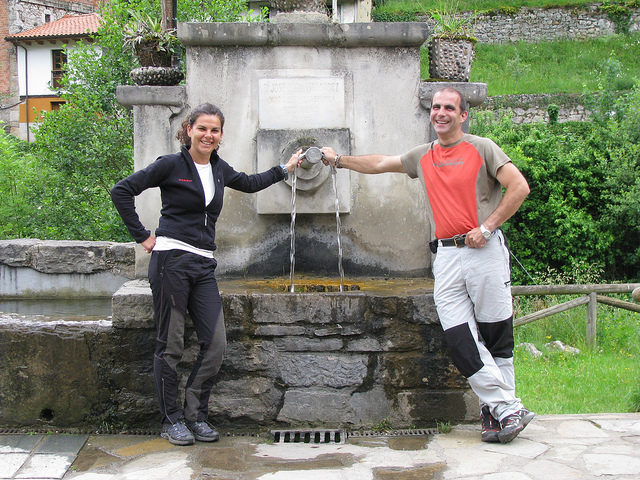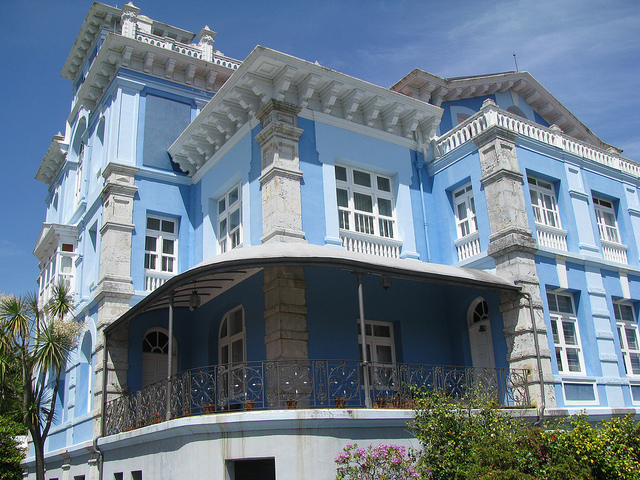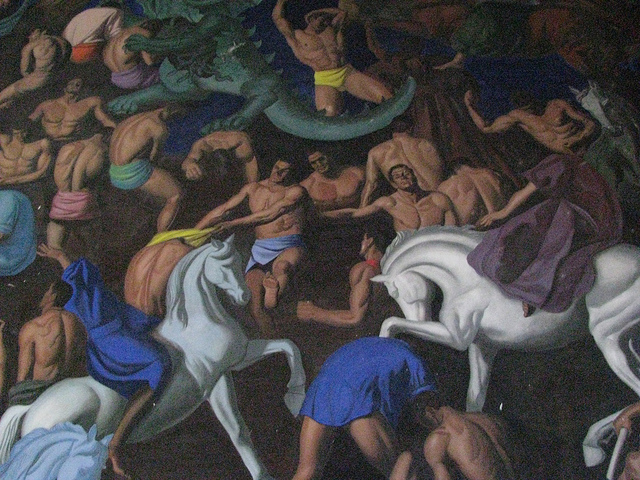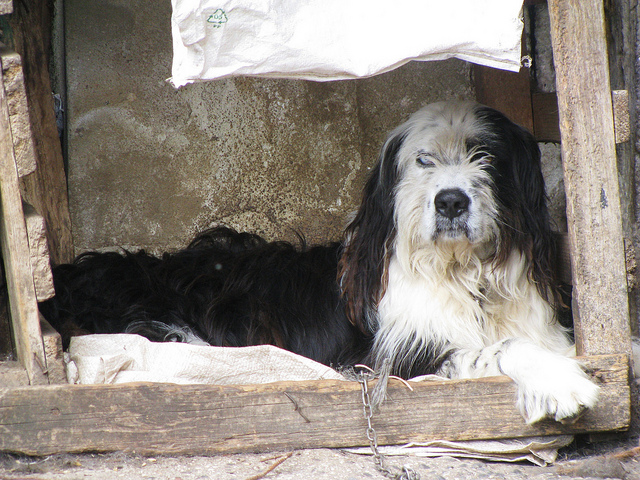To get to know the outdoor travel opportunities in Asturias, we had spent the morning cycling along the 22 km long Bear Trail or Senda del Oso, and local tourism expert Ana had explained all the different Asturian tourism offerings to me, from outdoor adventure to history, culture and culinary experiences. Now we had finished our biking tour and Tito Conde, my outdoor adventure guide, and his friend Estefania packed me in the car and we started to drive up the steep slopes of the Asturian mountains.

Village scene in Bermiego
After a drive on narrow and steep winding roads we stopped in a local Asturian mountain village called Bermiego. This is one of those villages that look like nothing has changed over the last couple of hundred years. I would guess that very few tourists ever make it to this small village; that is why it has this wonderfully authentic rural feel to it. Cows and sheep were grazing on the steep mountains surrounding us; and the sound of cowbells was filling the entire narrow valley. The high mountains across from us were still covered in snow.

Another view of Bermiego
We parked the van and started to walk through this village with its attractive stone farm houses. The weather had not improved much since the morning; it was still overcast and drizzly, but Tito had lent me his ski jacket and that was keeping me warm. We walked on the narrow road for about 20 minutes until Tito pointed out a special site in this area: the so-called “tejo milenario” (or the thousand-year-old yew tree) which was located right next to a stone chapel.

The 1000-year old yew tree in Bermiego
Tito explained that yew trees were used by the ancient Celtic tribes in this region as locations for their tribal rituals. After Christianization, yew trees still retained their significance and chapels were often built right next to the biggest and oldest yew trees.

Public fountain in Bermiego
Then we drove down the mountain to a village called Quiros whose main attraction is an ethnographic museum that was slated to open in June of this year. Quiros is a small mountain village that used to be a centre of coal mining which has a long tradition in the mountains of Asturias. The museum is located in a farmers’ house and showcases rural Asturian living on two floors of the building. The lower floor is home to a stable, a laundry washing area and a water trough, a wooden shoemaker’s workshop and other work areas.

The Ethnographic Museum of Quiros
The second floor provides educational displays that illustrate the agricultural lifestyle in Asturias with actual artifacts and big photographic exhibits. The different roles of men, women, children and the elderly on the farm are explained along with the chores that all the members of the family had to complete. Life on the farm in the harsh climate of the Asturian mountains was difficult; large families with many children had to share the space in small wooden or stone houses.

Educational displays at the Ethnographic Museum in Quiros
One of the displays explained that in 1752, there were 51 wooden clog makers in the village, 6 carpenters, 5 smiths, 3 stone masons and 11 tailors. Basket making was another important skill of the time. Agricultural tools, baskets and backpacks made from animal skins were on display and work processes were explained.

Tiny bedroom in the Ethnographic Museum
The bedroom of the house was absolutely tiny and naturally came equipped with a chamber pot. Even the bed itself, although made for a married couple, looked like it was made for a dollhouse by today’s standards. Tito explained that this was actually a rich man’s house; if that was the case I was wondering what a poor family would have lived in. The Ethnographic Museum of Quiros does a fantastic job of illustrating the harsh living conditions that a family would have faced 200 years ago up here in the Asturian mountains.

A typical “horreo”, used for storing the grain harvest above ground
From Quiros we continued our drive through an impressive mountain landscape to the Teverga area in southern Asturias. We stopped in a village called San Martín de Teverga where we were going to have a late lunch. Tito suggested a restaurant called Casa Laureano which is renowned for serving authentic Asturian mountain cuisine. The restaurant was booming and all the guest rooms were full; this was obviously a very popular local eating spot. Now was my first real chance to experience hearty Asturian cuisine.

Señora Maria in her busy kitchen at Casa Laureano
